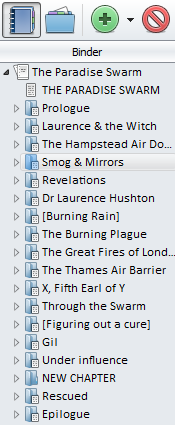I must confess, I’m a complete outlining nerd.
I scheme, plot, sketch and play around with my ideas pre-November, stopping just short of the ‘No prose before November’ rule.
When I tried discovery writing (Nano ’09 and ’10), I found myself wandering aimlessly from November 5th onwards. Though I enjoyed writing these novels, I know that’s really not what works best for me.
That’s not to say discovery writing isn’t a good way to go (in fact it might be the best way to go for you), but simply that there are about as many ways to get ready for Nano as there are Wrimos.
So if you’d like to do some plotting now, here are some resources and techniques I find useful:
Basic structure
In order to keep up with the pace of month-long noveling, I like to have a structure in place before I start. Not necessarily something extremely detailed, but a road map I can turn to when I don’t know what my characters should do next.
I swear by the first few steps of writer Randy Ingermanson’s Snowflake Method. The idea is to start with the most basic summary of your novel possible, then expand in stages (five sentences, then five paragraphs):
[box]A reconnaissance squad travels across the galaxy to investigate an unresponsive colony.
Setup – A Federation of Planets reconnaissance squad sets off on a mission to the other side of the galaxy.
Initial Problem – A freak storm badly damages the ship, forcing the Captain to take the mission off-course in search of affordable repairs.
Bigger problem – As soon as it resumes its course, the freshly-fixed ship is targeted from the inside by a saboteur, and from the outside by a massive, top-of-the-range rebel warship with a grudge.
Biggest problem – When the truth and horror of the Federation’s methods come out into the open, the crew turn onto one another, treason and murder afoot.
Resolution – Having gotten rid of the spy-turned-assassin, the crew land safely at the colony they were sent to investigate and part ways, escaping the Federation’s dictatorship.[/box]
A word of warning though, I never go past step four as the later steps are way too detailed even for me (it makes for an interesting read, but I would certainly not recommend it for Nano).
Arcs, arcs, arcs
I use the Seven-Point Structure, popularised by YA-author and podcaster Dan Wells to situate character arcs and subplots in relation to the main plot. My favourite way to do this is in a table where I can check things at a glance:
[box]
| Structure | Main storyline | Comms Officer |
|---|---|---|
| Hook Initial situation |
Crew leaves home planet | Works for Federation, has memory loss |
| Plot turn 1 Call to adventure |
Mission is taken off-course | Hears foreign language she can understand |
| Pinch 1 Added pressure |
Discovery of broken component | Realises she is being watched by Federation |
| Mid-Point From reaction to action |
Attacked by rebel warship | Hears reports of Federation modifying memories |
| Pinch 2 Take stand alone |
Betrayed by one of their own | Gets evidence of what the Federation did |
| Plot turn 2 Power is in you |
Get rid of the saboteur | Decides to trust rebel captain |
| Resolution End situation |
Crew arrives at destination planet | Breaks conditioning, recovers true identity |
[/box]
Have a listen to Episode 7.41 of Writing Excuses for a five-minutes explanation of the system, or if (like me) you’re a dork for in-depth structural analysis, check out Wells’ 5-part YouTube series on the subject.
Filling in the gaps
Once I’ve got a continuous thread to cling to, I start making some emergency bucket lists. Brainstorming for these is pretty simple: I set a timer for 10 minutes and jot down as many ideas as possible without pausing. A lot of what comes out never gets used, but the coolest ideas make it in my notebook.
Around week two, when I have absolutely no idea what should happen next, I’ll use these as custom prompts. For instance, here are some of the dangers I can incorporate if I need a space variant of the ‘Just have something blow up’ strategy:
[box]
Dangers:
- Space pirates, smuggles, slavers
- Ship boarded by rebels
- Solar storm, meteor showers
- Lose lights, power, access to controls
- Break vital piece of equipment
[/box]
If you’re of the insane Plot-A-Lot kind, share your Nano outlining tips and tricks below!
Originally posted at www.nanolondon.org.



 I had to put my foot down at some points, because some of his suggestions simply clashed with who the characters I created fundamentally were, but most of the advice was invaluable. Two hours after we started with ‘So what *does* your main character want most of all?’, we had re-plotted the story from start to finish.
I had to put my foot down at some points, because some of his suggestions simply clashed with who the characters I created fundamentally were, but most of the advice was invaluable. Two hours after we started with ‘So what *does* your main character want most of all?’, we had re-plotted the story from start to finish.